Our trees are the heroes of our yards. They stand so strong and mighty, selflessly providing us with their shade and other benefits, that we think nothing can hurt them.
But trees, just like other living things, can be susceptible to pests and diseases.
Let’s look at the most common tree pests and diseases that can impact trees in the Southern U.S. so you can learn what to look for and best defend your trees against infection or infestation.
Signs & Symptoms from Common Native Tree Diseases Found in the South
Common tree diseases in the South are not always easy to spot. They can sneak into weak or susceptible trees and slowly infect them.
But recognizing some classic visual signs can give you a head’s up as to what is going on with your tree. And spotting these symptoms early can make a world of difference in catching a problem before it becomes too detrimental to your tree’s health.
Wilting
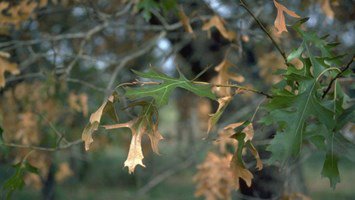
Wilting is a very classic sign of a tree problem.
Oak wilt is one Southern U.S. common tree disease that causes this symptom. After all, with “wilt” in its name, this is clearly going to be a part of what makes this disease recognizable.
All species of oaks, of course, are the most susceptible. But red oak species, including northern red, scarlet, and black oak, are the most impacted by oak wilt. Live oaks are next. White oaks, including white, post, and chestnut oaks, are usually the least affected.
While infected trees cannot typically be saved from oak wilt, root pruning, and injecting a systemic fungicide in nearby trees that are susceptible is the best way to slow this disease’s spread.
Leaf Spots

Seeing lesions on stems or leaves on your sycamores, oaks (particularly white oaks), maples, walnuts, or dogwoods?
These spots could be a sign of anthracnose -- one of the most common tree diseases in the South. Leaf and shoot blight, defoliation, and twig dieback can continue if anthracnose is left to infiltrate your trees.
In shade and ornamental trees, pruning of infected twigs, and proper and regular fertilization can reduce disease impact. Diseases can also be treated with foliar sprays as leaves are emerging in the spring.
Chlorosis
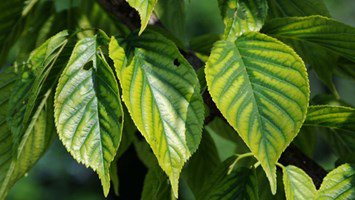
Leaves with chlorosis will develop a yellowish color instead of their regular vibrant green. You can spot chlorosis on just a couple of leaves, on an individual branch, on half of your tree’s crown, or on your entire tree.
One common tree disease that can exhibit symptoms of chlorosis is Phytophthora root rot. It affects many types of trees and shrubs including azaleas, rhododendrons, Japanese hollies, boxwoods, hemlocks, mountain laurels, dogwoods, andromedas, firs, camellias, white pines and yews, among others.
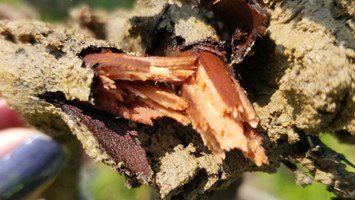
If you suspect Phytophthora root rot is the problem, have a certified arborist look at your tree to evaluate its overall health. This disease can only be managed if detected in its early stages. Reducing excessive soil moisture is critical to getting control. Once soil moisture problems have been addressed, there are some pesticides that can be applied as a soil drench to slow development of the disease.
Tip Dieback

If you are seeing tip dieback in your pine or spruce trees in winter or early spring, this may be a sign of needle cast, particularly Rhizosphaera needle cast.
This is a very common tree disease of evergreens in the Southern U.S. Susceptible species include hemlocks, pines in lowland areas and hemlock, fir and spruce in highland areas..
Cool, rainy weather or long periods of leaf moisture can encourage disease development.
Infected tree needles often become yellow or spotted in mid- to late-summer, then turn bright yellow and eventually brown. Then, the needles are often “cast.” When infected needles fall to the ground, they can produce spores that can blow and spread to other healthy trees.
To stop needle cast, prune out severely affected branches, rake up and dispose of fallen needles, deep root water during drought periods, and properly fertilize to invigorate plant growth. Certified arborists can prescribe the use of fungicides in spring and then again when conditions are conducive for disease development to treat needle cast.
Necrosis
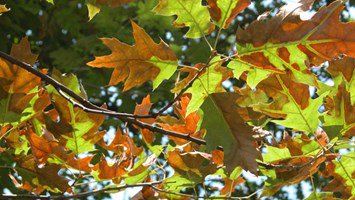
Seeing some premature leaf browning on your trees? This is known as necrosis, and it could be a sign of a common tree disease like bacterial leaf scorch.
Bacterial leaf scorch is caused by a bacterium known as Xylella fastidiosa. It is seen most often in oaks, sycamores, red maples, sugar maples, silver maples, London planes, hackberries, mulberries, elms, and sweetgums.
To help your tree defend itself against this disease, focus on reducing environmental stress by watering your trees deeply during extended sunny, hot, and dry periods. You can also mulch your tree to lock in soil moisture. Regular and proper fertilization can also provide your trees with much-needed nutrients. If only a few branches are infected, they can be pruned out by trained arborists to minimize spread.
Catching this disease early is key in prolonging your tree’s life.
Symptoms & Signs From Common Native Tree Pests (Insects) Found in the South
Like most people, you’re probably not a fan of insects infesting your home. That’s how your trees feel about common tree pests that like to chew, suck, or bore, into foliage or wood, weakening them and just making them feel and look lousy.
Let’s take a look at the most common signs and symptoms insects leave on Southern U.S. trees so you can better spot any potential problems and save your trees.
Chewing Insects
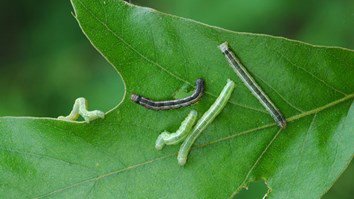
A southern tree pest that likes to chew is the cankerworm. It has a wide host range, including fruit trees, elms, ash, beech, hickory, maples, and oaks. This common tree insect’s larvae chew tree leaves. The chewing creates tiny holes in leaves. Feeding continues until all that remains are leaf veins.
Properly timed insecticide applications by certified arborists to young larvae that are just beginning to feed on tree leaves can help control cankerworms.
Sucking Insects

Gloomy scale is a pretty dark-sounding and sneaky scale. It’s not obvious on your trees and can actually go undetected for years, building to damaging populations.
These little flat, gray, disc-like common tree insects are usually found on the trunks or stems of their victims. And this is actually a protective coating the pest uses to cover itself while it lays eggs, hatching crawlers. Their job is to infest. They insert their straw-like mouthparts into your tree tissue, sucking out the contents.
You will typically find gloomy scales on maples, particularly red maples. If you don’t spot the pests, red maples will usually show you they’re stressed through dying branches, yellowing leaves, black coloration on the trunk and overall poor health.
To prevent gloomy scales, make sure your red maples are happy by reducing environmental stress. They like naturally more moist areas. This means a dry parking lot in the heat of the beating sun may not be the best spot for a red maple. Help trees during times of drought with adequate deep watering, so they don’t stress needlessly and become susceptible to insect attack.
Certified arborists can prescribe or treat scale with a systemic insecticide, but they have to do it at a specific time when crawlers are active in May or June so it actually reaches the pest.
Stippling

Two common tree pests of the southern U.S. that cause stippling in your tree leaves are spider mites and lace bugs.
Both pests are found on the backsides of leaves and are pretty hard to see with the naked eye. But the sign of their presence is a stippling appearance on the upper sides of leaves.
Both lace bugs and spider mites like a wide variety of evergreen and deciduous trees. Common lace bug favorites are azalea, andromeda, hawthorn, cotoneaster, quince, American elm, apple, sycamore, oak, and cherry. Spider mites prefer azaleas, hollies, camellias, junipers, spruce, arborvitae, and other coniferous evergreens.

Spraying tree leaf bottoms with water may knock spider mites off your trees in summer. There are also mite-specific pesticides.Dormant oils can be helpful in winter or before spring bud break to get rid of spider mite eggs.
Lace bugs can also be controlled with horticultural oil applied in the dormant season, and with specific pesticides during the active season. Initiate insecticide control of lace bugs in spring between March and May to reduce problems later in the season.
Galls
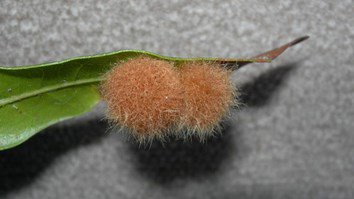
Almost everyone who has oak trees has seen small balls hanging in tree branches. These are oak galls or plant deformities caused by gall-making insects, like wasps or mites -- common tree pests in the South. Galls can typically be found in spring on oak trees.
Pruning and destroying gall-infested twigs and branches and then crushing galls to kill developing larvae can get rid of them. Rake and destroy gall-infested fallen leaves. Well-timed pesticide applications in the spring can help break their lifecycles.
While most galls do not seriously affect tree health, large numbers can distort leaves or cause early leaf drop. The only sure way to prevent galls is to choose trees that are not hosts to gall-making insects or mites.
Borers (holes and frass)

Chewing its way through your tree’s bark, leaving small, clearly visible, open exit holes is what the southern pine beetle does best.
It’s the most destructive insect of pines in the South, and it’s hungry. Populations of this common tree pest can build rapidly during outbreaks and kill large numbers of trees.
The southern pine beetle, which attacks all pine species, prefers loblolly, shortleaf, Virginia, pond, pitch, white, and Table Mountain pines. It seldom attacks longleaf pines.
Proactive prevention is your best bet for saving your southern pines. Work with your local arborist to develop a long-term plant health care plan, which will usually include reducing environmental stress through proper fertilization, mulching, pruning, and watering. This leaves trees less vulnerable to attack. Insecticide applications can also help prevent southern pine beetle in areas where it’s most likely to hit.
One of the most destructive tree borers is the Asian longhorned beetle (ALB). This tree pest prefers hardwood trees like ash, birch, elm, horse chestnut/buckeye, golden raintree, London planetree/sycamore, katsura, maples, mimosa, mountain ash, poplar, and willow.
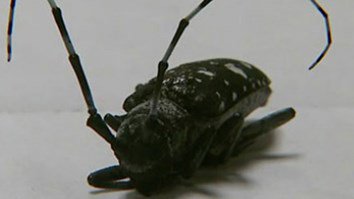
Asian longhorn beetles use their bullet-shaped, ¾- to 1-inch long, shiny black bodies with white spots and long antennae to bore round depressions in the bark of trees. They leave perfectly round, pencil-sized or larger exit holes.
They also leave another clue to their activity: excessive sawdust piles, or frass, near tree bases.
In addition to northern states like Ohio, Massachusetts, and New York, this pest infests trees in South Carolina. However, all states are at risk from this invasive pest because if it’s moved to an area via infested firewood, lumber, or nursery stock, then it can quickly take over.
Following quarantine rules in your state and planting non-host trees can help prevent ALB attacks. Certified arborists can confirm the presence of ALB if you think one or more of your trees are at risk.
Another common tree pest that likes to bore and tunnel into southern trees is the ambrosia beetle. This insect enjoys boring into crape myrtle, magnolia, oak, willow, peach, plum, cherry, Japanese maple, ash, dogwood, beech, and birch trees.
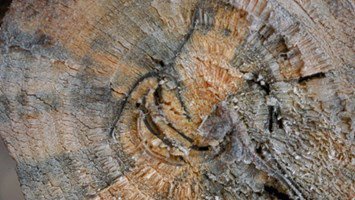
Ambrosia beetles usually prefer dead and dying trees. Unlike other bark beetles that like the outer tree layers, ambrosia beetles burrow pretty deep into the tree to enjoy the symbiotic ambrosia fungus they cultivate there. They keep their galleries clear of chewed up wood, called frass, by pushing it out of the tree. This provides room for the ambrosia fungus to grow and on which the beetles feed.
Pyrethroid insecticide applications made by certified arborists can help prevent attacks at the early part of their active months, but once beetles are inside trees they can’t be killed with insecticides. Preventive control is crucial in combating this pest.







